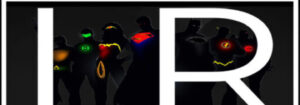I remember a time in the late 90s to around the early 2000s, when slasher films became immensely popular. Movies like I Know What You Did Last Summer, the Scream series, Urban Legend, and Final Destination were in the pop culture zeitgeist when I was in late elementary to early high school. We have a recent example with Netflix’s Fear Street Trilogy which itself is an adaptation of the series of the same name by the master of 90s slasher fiction for young adults namely R.L. Stine. Despite their near-ubiquity, though, I wasn’t really interested in them. It might be because when I did begin to engage with the horror genre, I’ve only ever considered the slasher genre with passing interest. I suppose it’s that they just never really seemed all that scary to me – or at least, not in the way that I prefer. A slasher movie might be scary while I’m watching it, but that fear doesn’t really stick around after the credits roll.
Stephen Graham Jones’ The Only Good Indians (2020) is entirely different, even though it would definitely fall under the slasher category if it were turned into a movie. It tells the story of four Blackfeet men, who did something they really shouldn’t have ten years ago. They get caught, but they go on with their lives, thinking they can put the event behind them. But that isn’t quite true: the past has come back – not to haunt them, but to hunt and kill them. And it won’t stop hunting them until it exacts its revenge.
Grab a copy of The Only Good Indians from Amazon by Clicking on the Book Cover below:

While I’m still not very interested in slasher films, I’ve glimpsed enough of them that I’m familiar with the tropes and conventions of the genre. Most slasher films focus on a killer who relentlessly pursues and murders their victims in graphically gruesome ways – all except for one: the “Final Girl”, or sometimes the “Final Boy”, the last one standing who confronts the killer and lives to tell the story (after a fashion). Different slasher films from different decades riff and play with these tropes and a whole host of others, but for the most part, these are the tropes that remain the same across most of them, and may therefore be said to define the genre.
The Only Good Indians definitely has those tropes: four young men who commit a terrible act are hunted down to the last by a vicious killer who is connected to that terrible act. It also has a “Final Girl”: the daughter of one of the four men.
While The Only Good Indians turns an excellent spotlight on the themes I’ve mentioned, I do find myself wishing that some thought had been given to the theme of feminism in the context of the American Indian experience, both past and present. While the fact that the Final Girl is a daughter of one of the four who participated in the instigating event says some very interesting things about generational guilt and how young women tend to pay the price and bear the consequences of it, I think it would have been nice to get a little more development for the killer – who is, in fact, a woman. The importance of this is difficult to explain in full, given that to do so would require diving into spoilers, but suffice to say that I wish more time had been devoted to really fleshing her out as a character – though I suspect that, given her nature, there is only so much characterisation that can actually be done, and Jones has done what he can without sacrificing the other aspects that make this novel such a good read.
Overall, The Only Good Indians is a truly chilling horror novel, which starts out slow and creeping before slowly gaining speed until, by the last few chapters, the reader will hurtle through the pages at top speed to get to the conclusion. It will likely occur to readers to compare The Only Good Indians to the film (and the book) I Know What You Did Last Summer. The comparison is warranted; after all, both play with themes of guilt, doing what is morally right, and dealing with the consequences of one’s actions. But the themes of tradition, identity, and a very specific type of guilt distinguish The Only Good Indians from I Know What You Did…, and the other slasher films that inspired and inform it, so that it stands very well on its own as a fine example of its genre.
The Rating: 4 out of 5.


